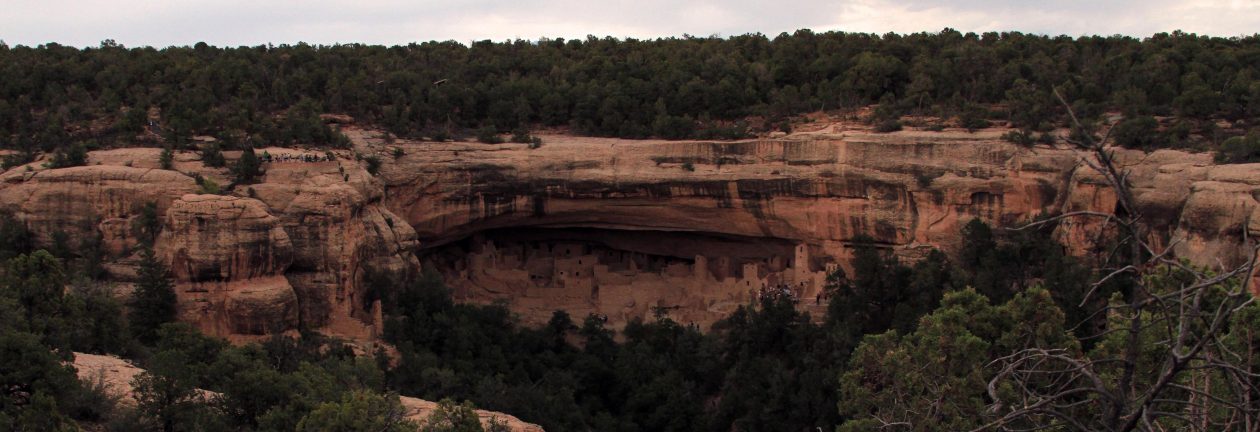Lumbini, Nepal
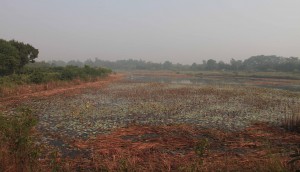
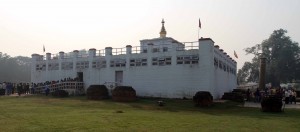
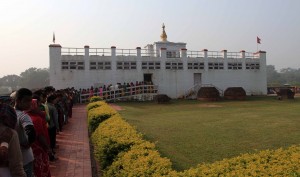
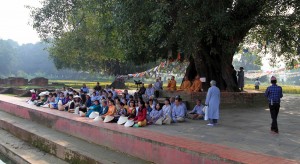
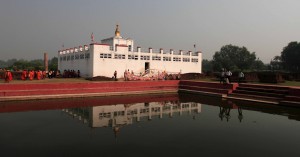

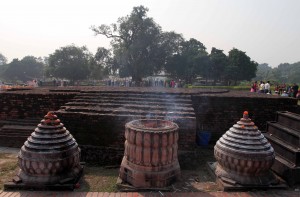
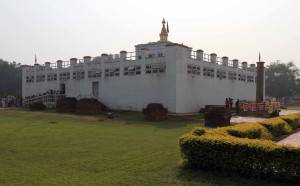
I woke up at 06:30, showered, dressed, and had breakfast (some type of fried eggs (I think), toast with butter and jam, fried potatoes and tomatoes, coffee, and water). I then relaxed in my room for a short time before gathering the strength to walk outside; I applied generous portions of sunscreen and grabbed my camera to see Siddhārtha Gautama’s (also known as “Lord Buddha”) birthplace (or so many Buddhists believe, many scholars think the actual place is twenty-five kilometers north in Kapilavastu where his father, an elected chief, worked, but according to one tradition, Siddhartha’s mother, Māyādevī (which means “Queen Māyā”; she is also known as “Mahāmāyā”, meaning “Great Māyā”) gave birth in Lumbini whilst traveling north to Kapilavastu in 623 BC). I walked in to the large park which contains the birthplace (one of the four most holy sites in Buddhism), a long canal, and many Buddhist temples, monasteries, and stupas; I think what Nepal has done here in Lumbini is brilliant; the Lumbini Development Trust has invited many countries to build their own monasteries and temples on this land, thus allowing many national varieties and ideas of Buddhism to exist within walking distances of each other (they have temples from Nepal (of course), Thailand, Sri Lanka, Myanmar, Vietnam, South Korea, Japan, Germany, Austria, etc.; it’s like a World’s Fair of Buddhism; unfortunately many are still under construction and it will be some time before their grand plans are realized here) – this would be great place for students and practitioners of the religion to study and meditate. I reached the holy site of the birthplace which is now enshrined inside a plain white temple known as the Maya Devi Temple; I waited in the long line waiting to enter the temple and entertained some local Nepalese kids who wanted to take many photographs with me. Finally, upon entering the temple, I saw the ruins contained under the steel-beam roof of the modern temple; these ruins date from the third-century BC to the sixth-century AD and are the remains of previous temples and stupas built on this spot; I then continued to wait in line until I finally came up to the marker over the exact birthplace (or where they think the exact birthplace occurred); I then donated some rupees to Buddhism, touched the wall with gold flakes, and exited the temple. On the other side of the temple, there were more ruins and a giant pond where Siddhārtha’s mother bathed before giving birth; there was also a large sacred Bodhi tree next to the pond where some monks were giving a sermon to a small audience. I walked around the tree and pond, before continuing past some ruins to the Ashokan pillar (a pillar to commemorate the site of Buddha’s birthplace, placed there by the Mauryan king, Ashoka, during his reign in the third-century BC.
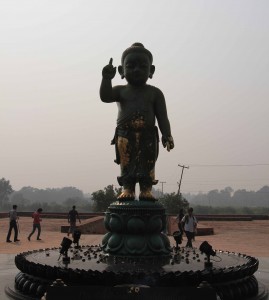
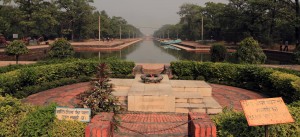

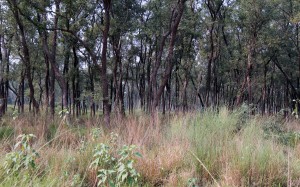
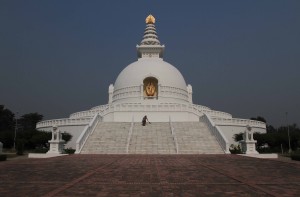
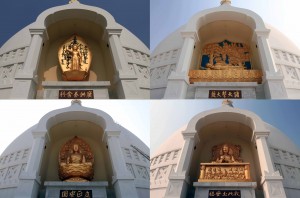

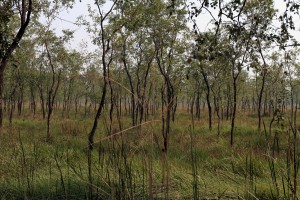

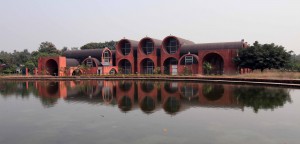
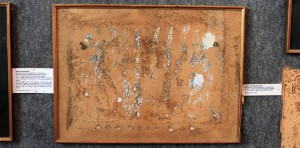
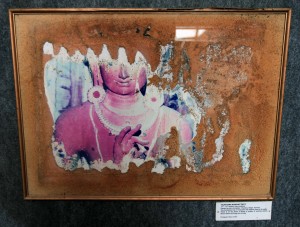
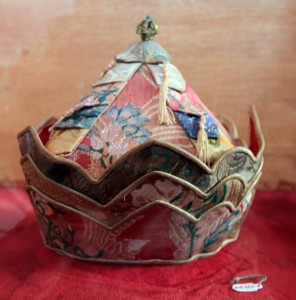
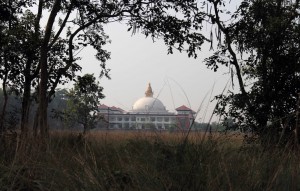
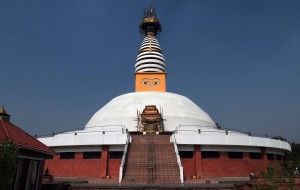

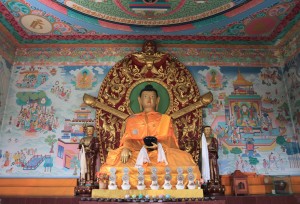

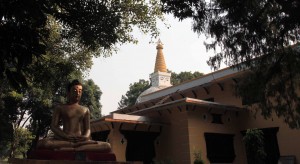
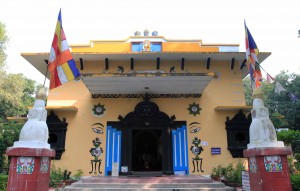
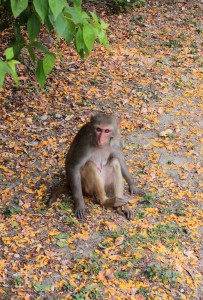
After touring Siddhārtha’s birthplace, I exited the Maya Devi Temple compound and walked out toward the long canal that runs through the park, passing by a large Boy Buddha statue placed just before the canal. I then walked the entire length of the canal, stopping to take photographs with some more Nepalese youngins upon their requests. Next, I walked past the Lumbini Museum, past many stalls set up by vendors selling their cheap trinkets, past a designated picnic area covered with so much litter and discarded filth that the locals should be ashamed of themselves, and walked to the large Japan Peace Stupa located at the opposite end of the park (opposite, that is, to the Maya Devi Temple). I then walked around the entire stupa before heading back the way I came. Next I stopped at the Lumbini Museum, which was a rather pathetic museum full of photographs, replica sculptures, and some Buddhist vestments – every National Museum I had been to in predominately Buddhist countries had more to offer than this place; furthermore, many of the photographs on display were eaten away and covered in dust, making the image incomprehensible (the museum curator needs to be fired if he or she cannot maintain simple photographs or at the very least replace them); although, despite this museum’s many shortcomings, it did educate me some more on Buddhism (e.g. how there are four holy sites (site of his birthplace, site of his enlightenment, site of his first sermon, and site of his death), as well as an additional four holy – but not quite as holy – sites that were added later, which I can’t remember). I then walked along the grand canal back toward the birthplace, past the Dharmodaya Sabha Stupa, and stopping at some modern Nepalese Buddhist constructions (the Manang Sewa Samaj Stupa and the Nepal Mahayan Temple); then, since I could care less about most modern temples, churches, mosques, and synagogues (historic structures appeal to me), I walked back near the Maya Devi Temple and visited the Royal Buddha Bihar Temple. Then, satisfied with my visit, I walked back to my hotel, passing by a lot of monkeys hanging out near the park entrance.
Once back inside my room, I had some snacks and beer while I read for a while. I then exited the hotel to have some dinner at a nearby restaurant; for this meal, I had chili powdered buffalo strips with bell peppers and onions, fried rice, and a bottle of beer. I then retired to my room and eventually fell asleep.
